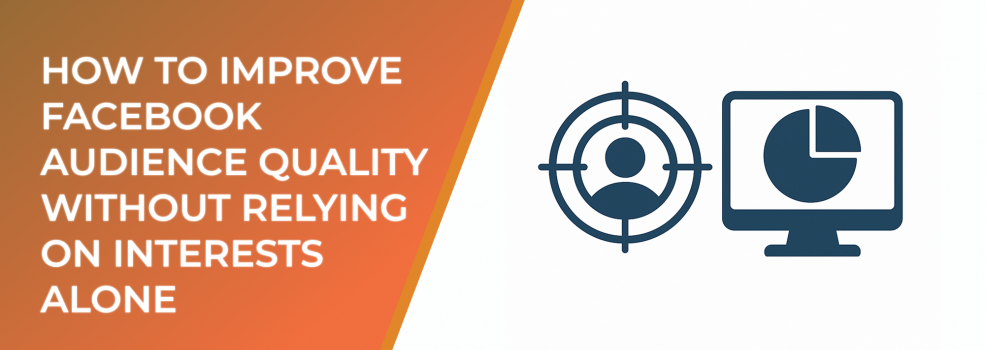Facebook ads are one of the most effective ways to scale campaigns, but audience quality often determines whether your campaigns succeed or fail. While many advertisers rely heavily on interest targeting, this strategy has limitations—especially with increasing privacy restrictions and less detailed targeting options. To achieve better Facebook ad performance, it’s crucial to explore additional ways to refine and improve audience quality.
Why Audience Quality Matters
Infographic showing the shift from broad targeting via interests to more refined options like custom and lookalike audiences
A campaign with poor audience quality leads to wasted ad spend, high CPM, and low conversion rates. According to Meta’s own reporting, advertisers can see up to 50% higher return on ad spend (ROAS) when their audience segmentation matches buying intent more precisely. That means it’s not just about reach—it’s about reaching the right people.
1. Leverage Lookalike Audiences
Visual comparison between lookalike audience targeting and interest-based targeting, emphasizing data-driven precision of lookalikes
Instead of relying only on interests, use lookalike audiences based on high-value actions such as purchases, add-to-cart events, or lead form submissions. Lookalikes built from quality first-party data consistently outperform broad interest targeting in both CTR and ROAS.
Tip: A 1% lookalike audience usually delivers the best balance between scale and relevance, while expanding to 3–5% can help when scaling.
2. Optimize with Custom Audiences
Custom audiences let you retarget warm users who already interacted with your business. These segments tend to deliver lower CPA and stronger conversion rates compared to cold targeting.
Examples of high-quality custom audiences include:
-
Website visitors (last 30–60 days)
-
Engaged Facebook/Instagram users
-
Past customers or email subscribers
Studies show that retargeting can improve conversion rates by 150% or more, making it one of the most effective strategies for Facebook ad optimization.
3. Focus on Conversion-Based Campaign Objectives
Your campaign objective directly impacts who Facebook delivers your ads to. Instead of traffic or engagement campaigns, focus on conversion objectives tied to purchases or leads. Facebook’s algorithm uses machine learning to find users most likely to complete these actions, improving audience quality over time.
According to WordStream data, advertisers using conversion objectives reported 2x higher CTR and significantly reduced cost per conversion compared to engagement campaigns.
4. Test Value-Based Lookalikes
If you have customer purchase data, value-based lookalikes allow you to tell Facebook which customers are worth the most to your business. This helps the algorithm prioritize users similar to your high-value customers, not just any buyer. Over time, this improves both ROI and average order value.
5. Analyze Audience Performance Metrics
Improving audience quality isn’t a one-time task—it requires monitoring. Pay attention to:
-
CTR (Click-Through Rate): Indicates ad engagement.
-
Conversion Rate (CVR): Shows if the audience is taking desired actions.
-
CPA (Cost per Acquisition): Determines cost efficiency.
By constantly testing and reviewing these metrics, you can refine targeting and exclude underperforming segments.
Suggested Reads from LeadEnforce Blog
-
Why You See 'Ad Set May Get Zero' on Facebook and How to Fix It
-
Why Your Facebook Ads Might Be Delivering to the Wrong Devices
Final Thoughts
Interest targeting still plays a role in audience building, but it shouldn’t be your only strategy. By leveraging lookalike audiences, retargeting, and conversion-based objectives, you can improve Facebook audience quality, reduce wasted ad spend, and maximize overall campaign performance.

